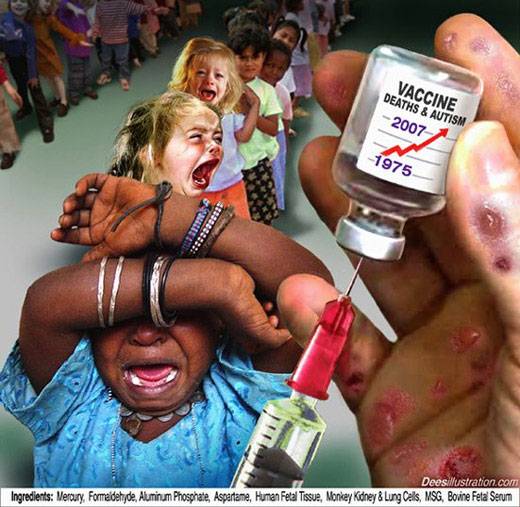By Robert F. Kennedy Jr.
 In June 2000, a group of top government scientists and health officials
gathered for a meeting at the isolated Simpsonwood conference center in
Norcross, Ga. Convened by the Centers for Disease Control and Prevention,
the meeting was held at this Methodist retreat center, nestled in wooded
farmland next to the Chattahoochee River, to ensure complete secrecy.
In June 2000, a group of top government scientists and health officials
gathered for a meeting at the isolated Simpsonwood conference center in
Norcross, Ga. Convened by the Centers for Disease Control and Prevention,
the meeting was held at this Methodist retreat center, nestled in wooded
farmland next to the Chattahoochee River, to ensure complete secrecy.
The agency had issued no public announcement of the session - only private invitations to 52 attendees. There were high-level officials from the CDC and the Food and Drug Administration, the top vaccine specialist from the World Health Organization in Geneva, and representatives of every major vaccine manufacturer, including GlaxoSmithKline, Merck, Wyeth and Aventis Pasteur.
All of the scientific data under discussion, CDC officials repeatedly reminded the participants, was strictly "embargoed." There would be no making photocopies of documents, no taking papers with them when they left.
The federal officials and industry representatives had assembled to discuss a disturbing new study that raised alarming questions about the safety of a host of common childhood vaccines administered to infants and young children. According to a CDC epidemiologist named Tom Verstraeten, who had analyzed the agency's massive database containing the medical records of 100,000 children, a mercury-based preservative in the vaccines - thimerosal - appeared to be responsible for a dramatic increase in autism and a host of other neurological disorders among children.
"I was actually stunned by what I saw," Verstraeten told those assembled at Simpsonwood, citing the staggering number of earlier studies that indicate a link between thimerosal and speech delays, attention-deficit disorder, hyperactivity and autism. Since 1991, when the CDC and the FDA had recommended that three additional vaccines laced with the preservative be given to extremely young infants - in one case, within hours of birth - the estimated number of cases of autism had increased fifteenfold, from one in every 2,500 children to one in 166 children.
Even for scientists and doctors accustomed to confronting issues of life and death, the findings were frightening. "You can play with this all you want," Dr. Bill Weil, a consultant for the American Academy of Pediatrics, told the group. The results "are statistically significant." Dr. Richard Johnston, an immunologist and pediatrician from the University of Colorado whose grandson had been born early on the morning of the meeting's first day, was even more alarmed. "My gut feeling?" he said. "Forgive this personal comment - I do not want my grandson to get a thimerosal-containing vaccine until we know better what is going on."
But instead of taking immediate steps to alert the public and rid the vaccine supply of thimerosal, the officials and executives at Simpsonwood spent most of the next two days discussing how to cover up the damaging data. According to transcripts obtained under the Freedom of Information Act, many at the meeting were concerned about how the damaging revelations about thimerosal would affect the vaccine industry's bottom line. read the rest of the article
Immunizations are "mandatory" in the U.S. for all children; 7 visits to a healthcare provider for a total of 32 vaccine mixtures - all before the child enters school. Every year, between 12,000 and 14,000 reports of adverse vaccine reactions are filed with the FDA. These include hospitalizations, permanent brain damage, and death. The FDA estimates that this figure may represent just 10 percent of the true damage being done. In just 7 years (by August 31, 1997), the U.S. government spent more than $802 million compensating moms and dads for brain injuries and deaths inflicted on their children by mandated vaccines. (National Vaccine Injury Compensation Program (VICP)
